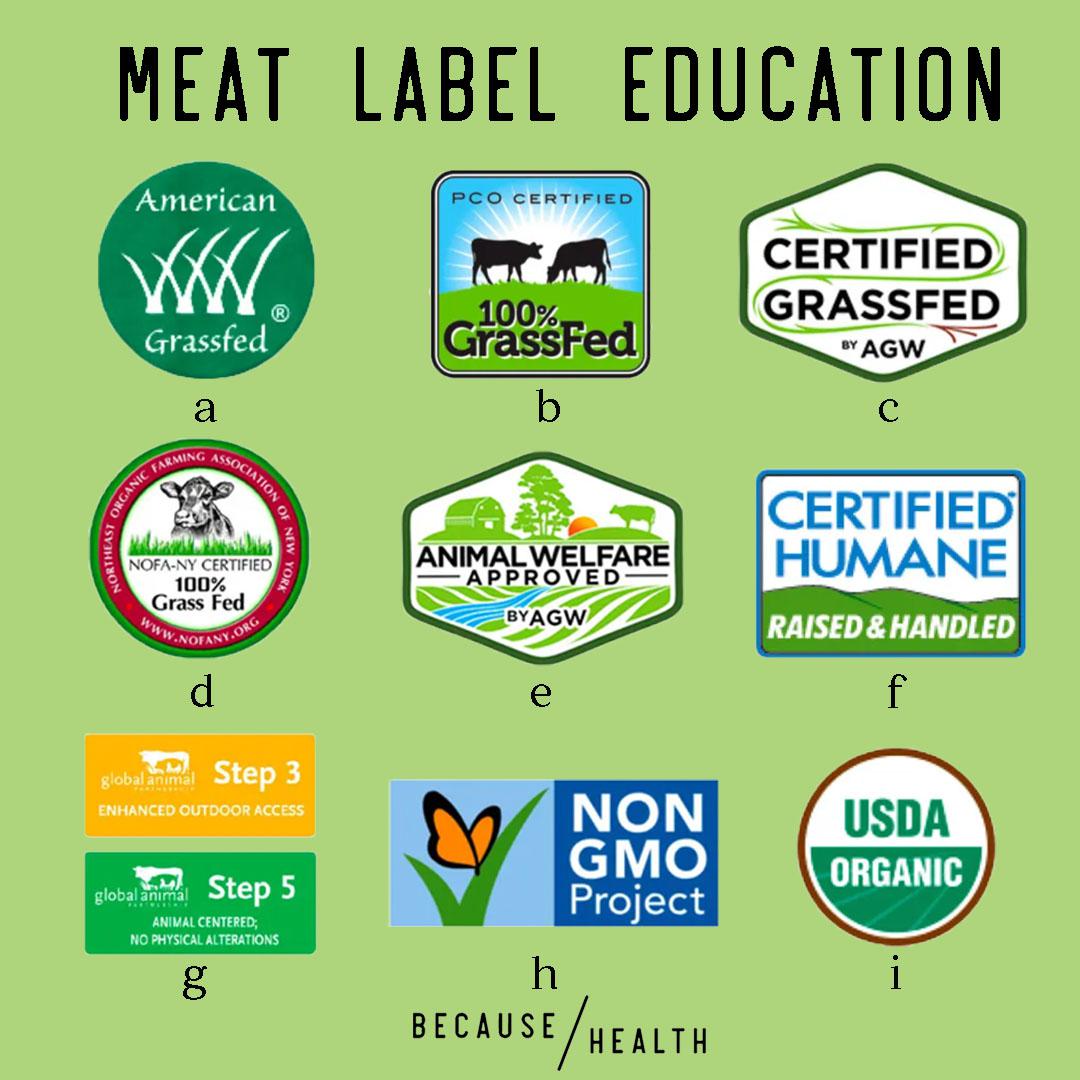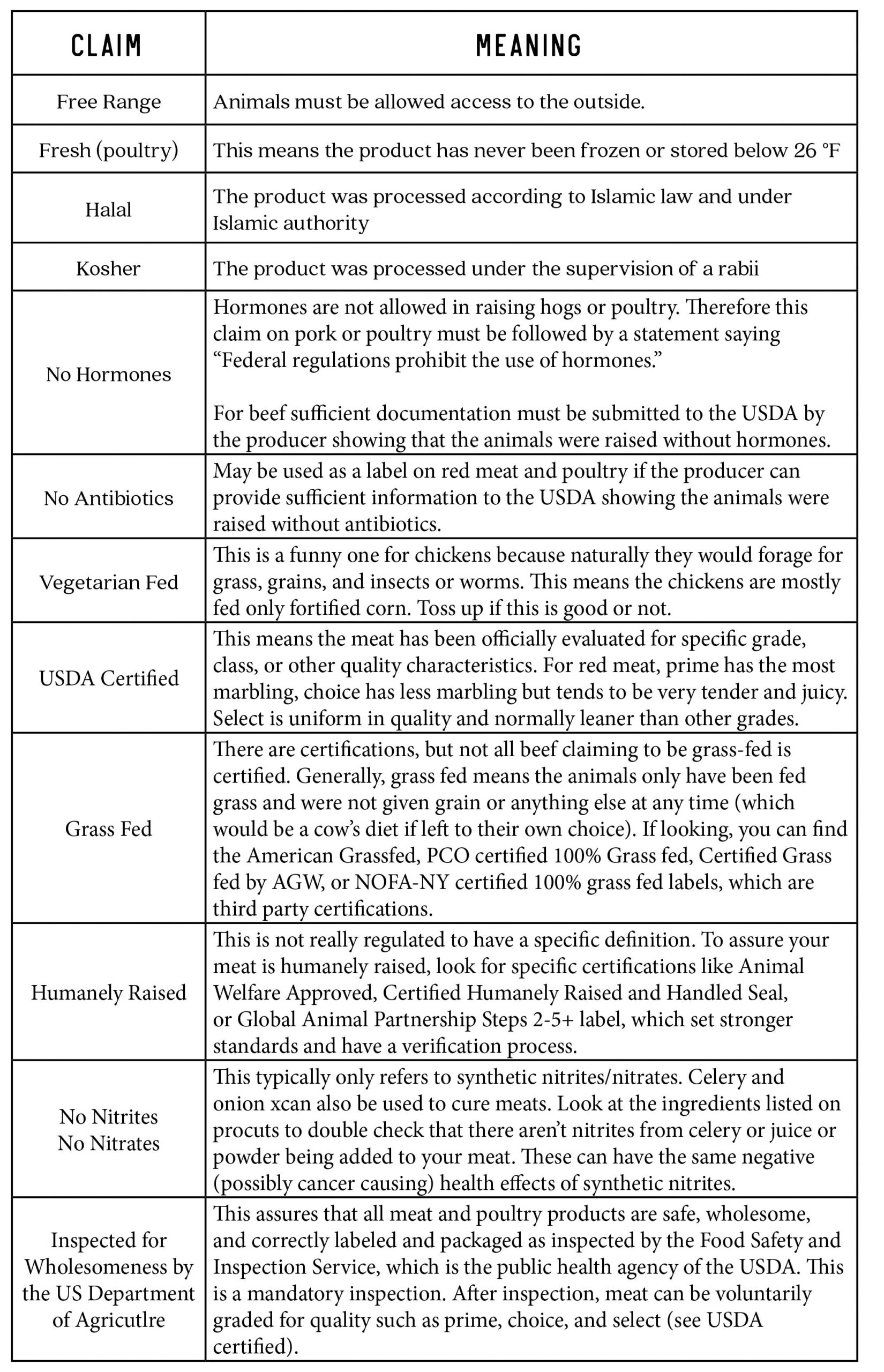Label Education: Meat
decoding all those stickers that come on your package of burgers
We know looking at labels can be tough. The meat aisle is always one that is a little confusing. Some cuts of meat have like 15 stickers and certifications on them, others have basically nothing. Do all of those little badges really make a difference for what you are bringing home? We went through FDA definitions (not the most fun job, but someone’s gotta do it!) to figure out what each label really means and break it down for you.
You might have to prioritize which labels are most important to you, but now you know what each one means and they are all written down in one place. When we are looking at meat in terms of how what we eat can impact our health, we personally think no nitrates/nitrites and organic or no hormones and no antibiotics top the list.
Certifications

a) American Grassfed
Requires cattle are fed with only grass and forage throughout their life which must be on an American family farm. Antibiotics and growth hormones are prohibited. Animals must have access to pasture and cannot be raised in confined animal feeding operations. No GMO feed is allowed. There are also guidelines about promoting animal health and welfare and prohibiting the use of electric prods except in emergency situations.
b) PCO Certified 100% Grass Fed
Requires that the cattle were fed only grass and forage with no grain. They must also meet USDA organic standards.
c) Certified Grass Fed by AGW ( A Greener World)
To achieve this certification, the farms must also be Animal Welfare Approved. This adds to that certification by assuring that cattle get a 100% grass as forage based diet and the pasture can adequately support that.
d) NOFA-NY Certified 100% Grass Fed
This label certifies that the cattle have been only given grass or grass based feed for their entire life, besides milk before they are weaned.They must also be given access to pasture during growing season. It also meets all requirements for organic beef include no antibiotics or hormones, no GMO feed, and no herbicides or pesticides used on the pasture for feeding.
e) Animal Welfare Approved
This certification requires that animals are raised humanely on a family farm from birth to slaughter. They must be raised on a pasture or range. The certification prohibits use of antibiotics, growth hormones, and animal by-products in feed.
f) Certified Humanely Raised and Handled
This ensures animals are treated in a certain manner. It means animals are never kept in cages, have the freedom to do what they would naturally do, and are fed quality feed without antibiotics or hormones. Also assures slaughter standards. Does not mean animals have access to outdoors and does not talk about physical alterations to animals like beak trimming.
g) Global Animal Partnership (steps 2-5+)
This is a certification that has varying levels depending on the practices of the farm.
Step 1: no cages, crates or crowding
Step 2: enriched environment
Step 3: enhanced outdoor space
Step 4: Pasture Centered
Step 5: Animal Centered, no physical alterations
Step 5+: Animal Centered, entire life on same farm
Antibiotics are prohibited at all levels (except for chickens), growth hormones are prohibited for all steps, and no animal by-products are allowed in feed.
h) Non GMO Project Verified
Non-GMO project verified requires that the product have systems in place that address testing, traceability, segregation, formulation, labeling and quality assurance. The certification assures meaningful ongoing testing of high GMO risk inputs, and that organizations are effectively working to minimize the risk of GMO contamination to the chain.
i) USDA Organic
Animals are raised in living conditions accommodating their natural behavior, fed 100% organic feed and forage, are not fed with GMO products, and are not administered antibiotics or hormones.
Label Claims

